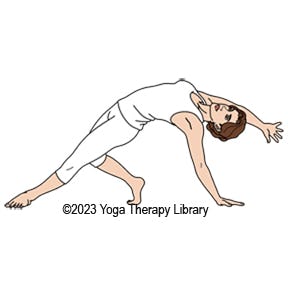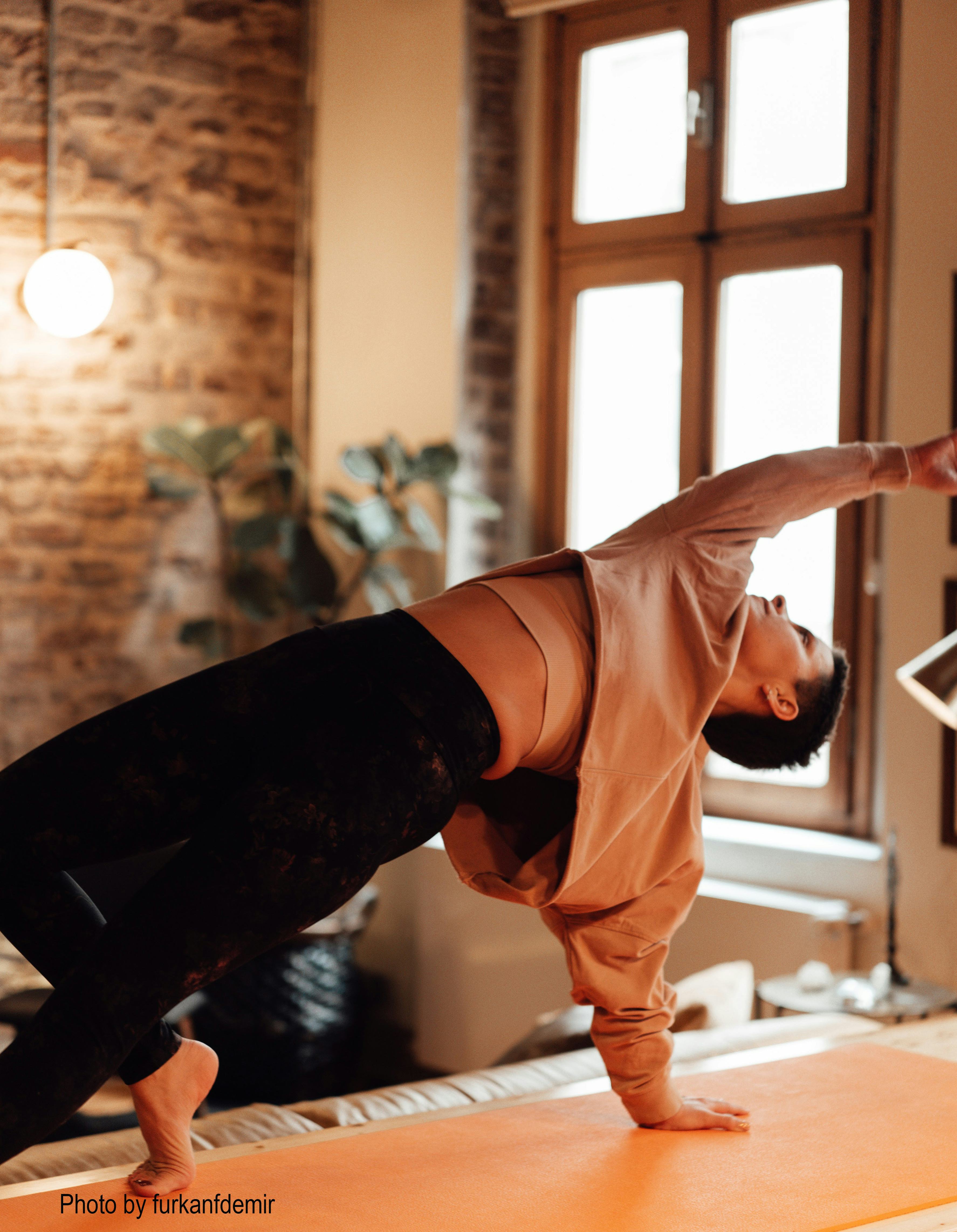Rejoicing in Freedom with Wild Thing Pose: Camatkarasana
Camatkārāsana (चमत्कारासन)

wild thing yoga pose yoga therapy library image
Rejoicing in Freedom with Wild Thing Pose: Camatkārāsana (चमत्कारासन)
Delve into the joyous expression of your innate freedom with the Wild Thing Pose, or Camatkārāsana. This liberating backbend opens your heart to the sky and allows your energy to flow freely. Not only does it enhance your physical flexibility, but it also fosters emotional resilience and happiness.
Symbolism
Camatkārāsana, a Sanskrit term derived from "Camatkāra," meaning "festive turbulence, show, surprise," and "āsana," referring to the pose, encapsulates the essence of the Wild Thing Pose. It symbolizes freedom, joyous expression, and an opening to joy. Much like a spirited, unbridled creature, this pose encourages us to express our inner joy freely and fully, inviting us to engage in the dance of life.
Benefits of Camatkārāsana
- Strengthens the upper body: The pose engages the arms, shoulders, and upper back, improving muscle tone and endurance.
- Opens the chest and shoulders: The deep backbend and rotation open the chest and shoulder muscles, enhancing breathing capacity.
- Improves balance: By challenging your stability, Wild Thing strengthens your core and improves your sense of balance.
- Engaged and Lengthened Muscles
Engaged Muscles:
The upper body's deltoids, triceps, and rhomboids are actively engaged. The core muscles, including the obliques and transverse abdominis, are also activated for stability.
Lengthened Muscles:
The chest muscles (pectoralis major and minor) and the hip flexors (including the iliopsoas) are stretched and lengthened.

Wild Thing Yoga Pose
Cuing Text – using economy of words
- Start in Downward-Facing Dog.
- Slightly rotate your left hand to rotate your shoulder externally.
- Extend your right leg up and open your right hip.
- Bend your right knee and guide your right foot toward the left side of your mat.
- Place your right foot down, on the ball or the sole of your foot
- Lift through your hips and chest, reaching your right arm up and over.
- Extend your left leg and externally rotate (optional)
Variations for Accessibility
Use a Yoga Block: If your foot doesn't reach the floor, use a yoga block to provide additional height and support.
Practice Near a Wall: Practicing this pose near a wall can give you extra balance and confidence.
Cakras Influenced
Camatkārāsana primarily stimulates the Anāhata (Heart) Chakra, opening us to love, compassion, and joy.
Drishti - Dṛṣṭi ऊर्ध्व दृष्टि
The drishti recommended for Camatkārāsana is the Urdhva Drishti, or the "Upward Gaze." This gaze promotes a sense of openness, mirroring the energetic qualities of the pose.
Celebrate your inner strength, flexibility, and joy with the practice of Camatkārāsana. Remember to let your inner "wild thing" express freely and joyfully as you embody this pose's symbolism and benefits. Enjoy the journey of opening your heart and embracing the freedom within you.
What fellow Yogis who practice Wild Thing Pose say:
- "I love doing Wild Thing, it's like I can almost feel a physical rush of joy, it's really hard to explain."
- "There's something about Wild Thing Pose... every time I do it, it puts a grin on my face."
- "When I'm in Wild Thing Pose, I feel like a kid again, just playing around without a care in the world."
